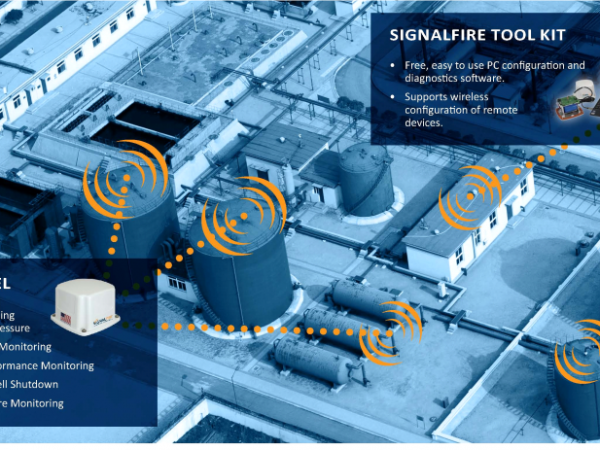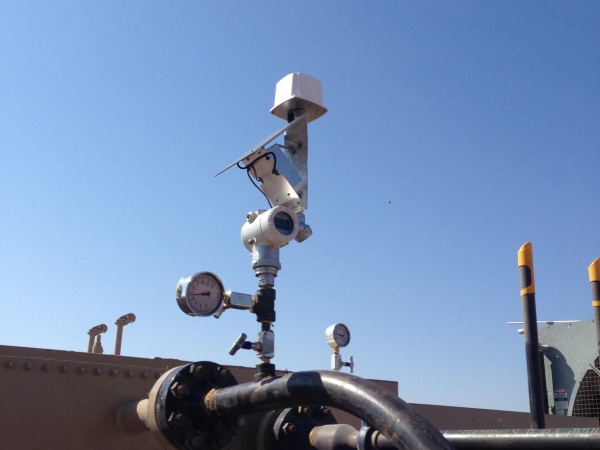Four Ways How SignalFire Builds a Better Wireless Telemetry System
Different wireless sensor control systems on the market today claim the same capabilities to remotely track, control, and connect various operations without the costs and hassles of cabling requirements. But, that’s not the end of our story. The SignalFire Remote Sensing System offers additional capabilities that don’t limit its use in different applications while addressing new IOT requirements. Here are four ways our wireless telemetry system differentiates itself from competing technology on the market.
-
Universal Sensor Compatibility
While many wireless networking systems limit interfaces to one or two types of sensors or require you to choose from their limited selection, the SignalFire Remote Sensing System (SFRSS) allows users to specify many types of wireless sensors to monitor assets including analog, digital, Modbus, temperature, HART strain gauge turbine. As a result, users can choose the best sensor for each application. The SFRSS brings input from different sensors to a single point with a single interface. Because the wireless telemetry system is based on a scalable open architecture, you can add or subtract sensors needed to measure parameters such as pressure, temperature, level, and flow to automate functions further.
- Retrofit using existing sensors
- Build a fully wireless network using the best sensors for each application
- Avoid vertical-vendor monopolies
- Information delivered using industry-standard Modbus protocol
-
Two-Way Mesh Technology
In outdoor applications such as a tank or agricultural farm, a wireless sensor network may spread over many square miles. Older telemetry systems may be challenged over large areas and certain topographies. The SignalFire sensor control system incorporates a two-way mesh network that provides the power and stability needed for reliable information transfer over long distances regardless of hills, buildings and other structures. The mesh network enables wireless devices of the remote sensing system to self-configure into a web-like structure to accommodate for buildings and hilly terrain that can obstruct the radio transmissions of other networks. As the SFRSS is self-configuring and self-healing, actionable information will get through as long as there is a communications path. Robust gateways can accommodate hundreds of transceiver inputs from the field sensor, enabling the network to cover a large geographic range.
- Self-configuring, wireless nodes automatically connect to the network
- Ideal for applications with many widely disperse assets and frequent network changes
- No configuration or setup is needed with a true mesh system as it operates automatically
-
Truly Wireless
For applications without a power source at the measurement location, the SignalFire Remote Sensing System can provide power for itself as well as the sensor. A high-capacity lithium primary battery fits inside the wireless device and offers reliable operation even in low temperature. Battery life is typically determined by the sensor’s power requirements as very little power is used to operate the Sentinel nodes that interface with the sensors and transmit formatted information to the Gateway. Battery life with a low power sensor can be in the 5-10 year range.
If the sensor draws too much power (takes measurements more frequently than only every few minutes), battery life may be shorter. In these situations, a solar module provides indefinite power to nodes and sensors. Both the lithium battery and solar module are C1D1 approved for use in hazardous environments.
- SignalFire ToolKit configuration software provides a calculator that estimates battery life based on sensor type, sensor warm- up time, sensor draw and reporting interval.
-
Supporting the IOT
Information collected from the SignalFire Remote Sensing System is downloadable into analytics software for better asset management, such as calculating and analyzing chemical costs. In some configurations, information is accessible through an Internet connection. An Ethernet Interface Module connects to the Gateway to tie information into either a local Wifi network for local access or a modem that connects the Internet and a cloud service provider. With historical stats stored in the clouds, wireless networks offer real-time status into operations that can be viewed autonomously on different devices such as smart phones.
- Easy-to-read templates provide a graphic view of operating status
- Consolidate intelligence to analyze historical information for greater insights into trends
For more information on SignalFire technology, download our new capabilities brochure or contact us to discuss your application at 978-212-2868 or scott.keller@signal-fire.com.
0 Comments
Leave a reply
You must be logged in to post a comment.







